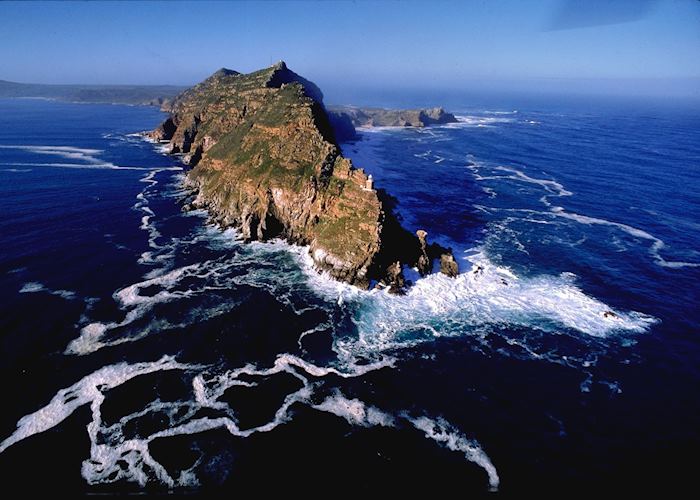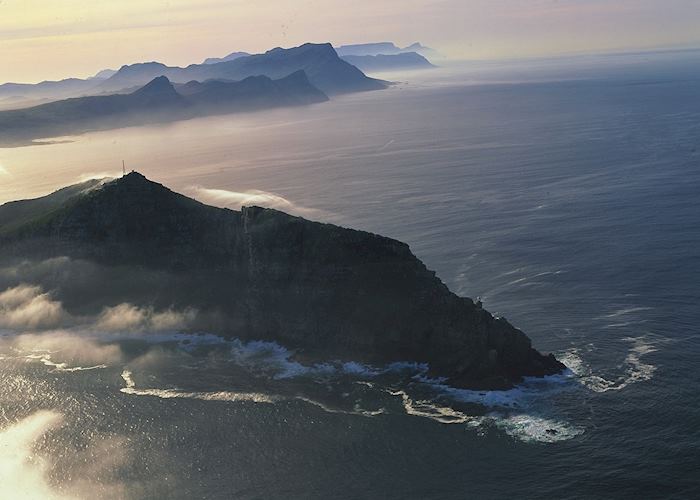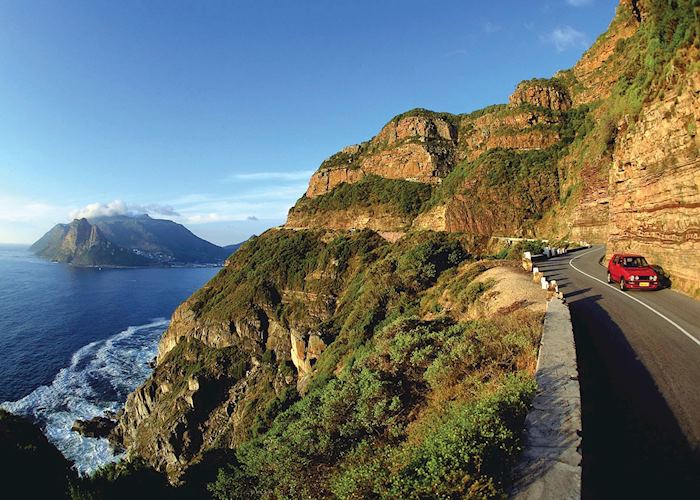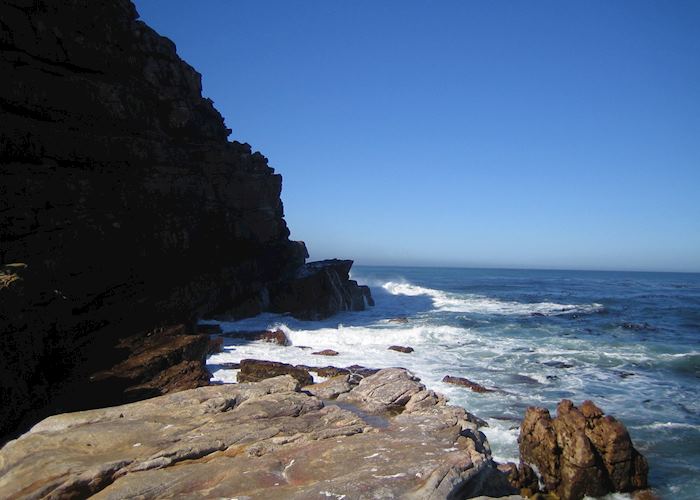The Cape Peninsula is an area of dramatic natural beauty and huge ecological significance, which manages to retain a wild feel despite its huge popularity with visitors.
As you drive south from Cape Town, you pass through the exclusive suburbs of Camps Bay and Clifton before continuing onto Hout Bay and through Constantia, where the road meanders behind Table Mountain and down onto the coast. After passing through a succession of small towns and villages perched on the edge of the False Bay, you arrive at the Cape of Good Hope Nature Reserve. This reserve has a huge variety of flora and fauna, and is a significant part of the Cape Floral Kingdom, the smallest and most diverse of the world's seven floral kingdoms.
The principal vegetation of the Cape Floral Kingdom is fynbos, low-lying bushes and heathers that thrive in the sandy soil of the peninsula. Also in the reserve are several species of antelope including bontebok and eland and lots of baboons, whilst off the shoreline are kelp forests where seals and penguins frolic.
The very rare African black oystercatcher can be seen on the shoreline, as can the Cape cormorant. For a place of such fierce reputation among sailors, the Cape of Good Hope itself is quite unassuming; Cape Point fulfills expectations far more impressively. From the car park and restaurant, a funicular railway runs to the end of the continent (or if you are feeling more active, you can walk). Here a lighthouse stands sentinel over one of the most breathtaking views in the world. Waves crash against the foot of the cliffs hundreds of feet below, and the sea stretches to a vast curved horizon, its surface rippled and whitened by winds that have blown unhindered from the Antarctic.
Returning north you come to Simon's Town, for many years a British naval base and a showcase of Victorian urban architecture. Boulders beach, nearby, is home to a large colony of jackass penguins, to be found nesting beneath the boardwalks or surfing waves into the shore.
Finally your day concludes with a visit to the Kirstenbosch National Botanical Garden. This houses a huge number of indigenous plants, flowers and trees, as well as exotics such as the camphor trees planted by the founder of Kirstenbosch, Cecil Rhodes, in 1895. Paths lead in among the beautiful flora, with benches in shady and secluded spots if you wish to take a rest. The gardens eventually dissolve into the upper slopes of Table Mountain, which provides the perfect backdrop to your time here.
who's been there
Start planning your tailor-made trip by contacting one of our South Africa specialists
-
617-223-4521617-223-4340
- Make an inquiry








